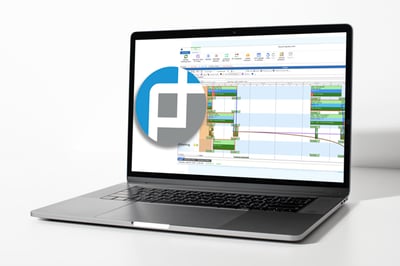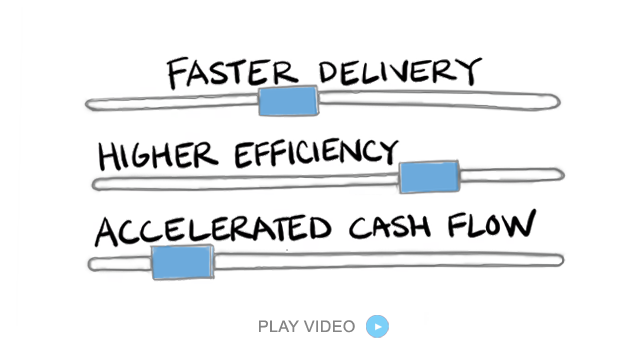The Role of Inventory Levels in Production Scheduling
In packaging manufacturing, maintaining optimal inventory levels is not just a logistical necessity—it’s a critical factor in ensuring efficient production scheduling. The interplay between inventory management and production scheduling significantly influences operational efficiency, cost management, and customer satisfaction.
When enhanced with advanced integration tools like PlanetTogether and enterprise systems such as SAP, Oracle, Microsoft Dynamics, Kinaxis, or Aveva, the benefits multiply exponentially.

The Importance of Inventory Levels in Production Scheduling
Inventory management is often viewed through the lens of stock availability, but its role extends far beyond that. For Plant Managers, inventory levels directly impact production scheduling in three primary ways:
Ensuring Material Availability
Accurate inventory tracking ensures that raw materials and packaging supplies are available when needed. Shortages can lead to production halts, missed deadlines, and increased costs from expedited material orders. Conversely, overstocking can tie up capital and increase storage costs.
Balancing Production Efficiency with Demand
Maintaining the right inventory levels helps avoid overproduction or underproduction. By aligning production schedules with demand forecasts and available inventory, plants can achieve smoother workflows and reduced waste.
Improving Supply Chain Visibility
Real-time inventory insights enable better collaboration with suppliers and customers. This visibility ensures that production schedules are realistic and aligned with upstream and downstream supply chain activities.

Challenges in Managing Inventory Levels for Production Scheduling
Plant Managers often face several challenges when trying to balance inventory and production scheduling, including:
Inaccurate Inventory Data: Manual tracking or outdated systems can lead to errors in stock levels, resulting in production delays.
Demand Variability: Sudden shifts in customer demand can disrupt even the most well-planned schedules.
Complex Supply Chains: With multiple suppliers and distribution channels, keeping inventory aligned with production needs can be daunting.
Lack of Integration: Disconnected systems hinder real-time communication between inventory management and production scheduling processes.

Leveraging Technology: Integrating PlanetTogether with ERP Systems
The integration of advanced tools like PlanetTogether with ERP systems such as SAP, Oracle, Microsoft Dynamics, Kinaxis, or Aveva offers transformative potential. These integrations create a seamless flow of data between inventory management and production scheduling, providing Plant Managers with real-time insights and enhanced decision-making capabilities.
Benefits of Integration
Real-Time Inventory Visibility
Integration ensures that inventory data is continuously updated and accessible across all platforms. For example, combining PlanetTogether’s Advanced Planning and Scheduling (APS) capabilities with SAP’s inventory management module enables real-time synchronization. This ensures that production schedules are always based on the latest inventory data.
Enhanced Forecasting and Planning
With integrated systems, demand forecasts from ERP tools like Oracle or Kinaxis can feed directly into PlanetTogether. This allows for production schedules that are dynamically adjusted to reflect changes in demand, reducing the risk of overproduction or stockouts.
Automated Workflows
Integration eliminates the need for manual data entry between systems, reducing errors and freeing up time for strategic tasks. For instance, integrating Microsoft Dynamics with PlanetTogether can automate order releases based on inventory thresholds.
Improved Decision-Making
Advanced analytics and reporting capabilities from tools like Aveva, combined with PlanetTogether, provide actionable insights into inventory trends and production performance. These insights enable Plant Managers to make informed decisions about resource allocation and scheduling priorities.

Best Practices for Optimizing Inventory Levels in Production Scheduling
While technology provides the tools, successful integration and execution depend on adopting best practices. Here are some strategies for Plant Managers to optimize inventory levels:
Invest in Accurate Demand Forecasting
Use advanced forecasting tools within ERP systems like SAP or Kinaxis to predict demand trends accurately. Incorporate these forecasts into PlanetTogether’s APS system for synchronized planning.
Implement Just-in-Time (JIT) Principles
Align inventory procurement with production schedules to minimize stockholding costs. Integration ensures that JIT strategies are feasible by providing real-time visibility into both inventory and production plans.
Conduct Regular Inventory Audits
Even with advanced systems, periodic physical audits are essential to validate data accuracy and identify discrepancies.
Prioritize Critical Materials
Focus on maintaining optimal stock levels for high-priority materials to avoid bottlenecks in production. Use system alerts and thresholds within integrated platforms to monitor these materials.
Train Your Team
Ensure that staff are well-versed in using integrated tools like PlanetTogether and ERP systems. Effective training enhances system adoption and maximizes ROI.
For Plant Managers in packaging manufacturing, inventory levels are more than a metric—they are the foundation of effective production scheduling. By leveraging integrations like PlanetTogether with ERP systems such as SAP, Oracle, Microsoft Dynamics, Kinaxis, or Aveva, plants can achieve greater efficiency, reduce costs, and meet customer demands with precision.
The path forward involves embracing technology, adopting best practices, and fostering a culture of continuous improvement. With the right tools and strategies, managing inventory and production scheduling can become a streamlined, data-driven process that drives success in an increasingly competitive market.
Are you ready to take your manufacturing operations to the next level? Contact us today to learn more about how PlanetTogether can help you achieve your goals and drive success in your industry.
Topics: PlanetTogether Software, Integrating PlanetTogether, Improving Supply Chain Visibility, Packaging Manufacturing, Ensuring Material Availability, Balancing Production Efficiency with Demand





















LEAVE A COMMENT